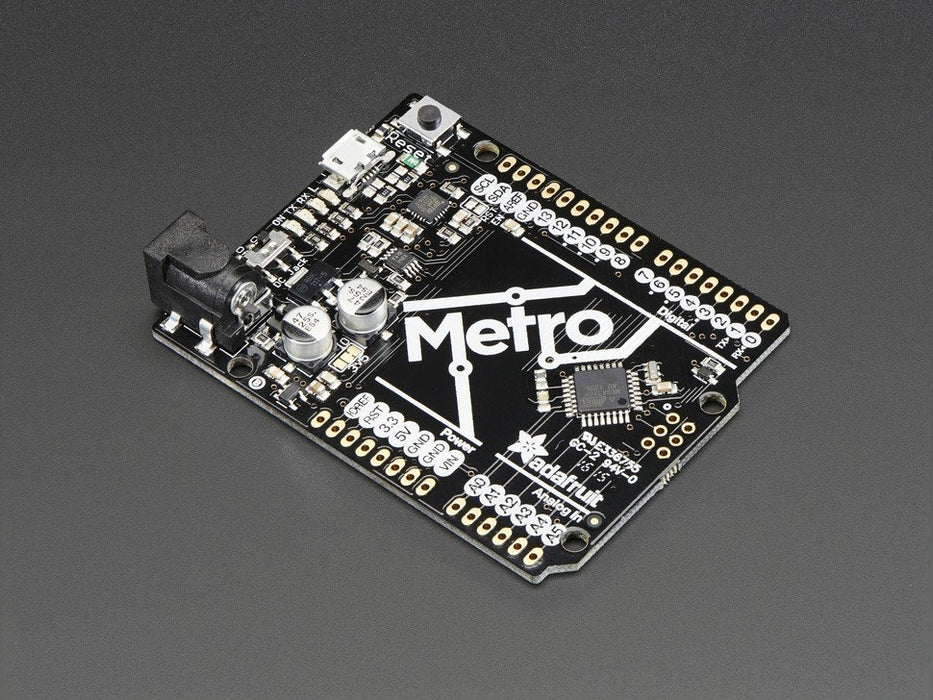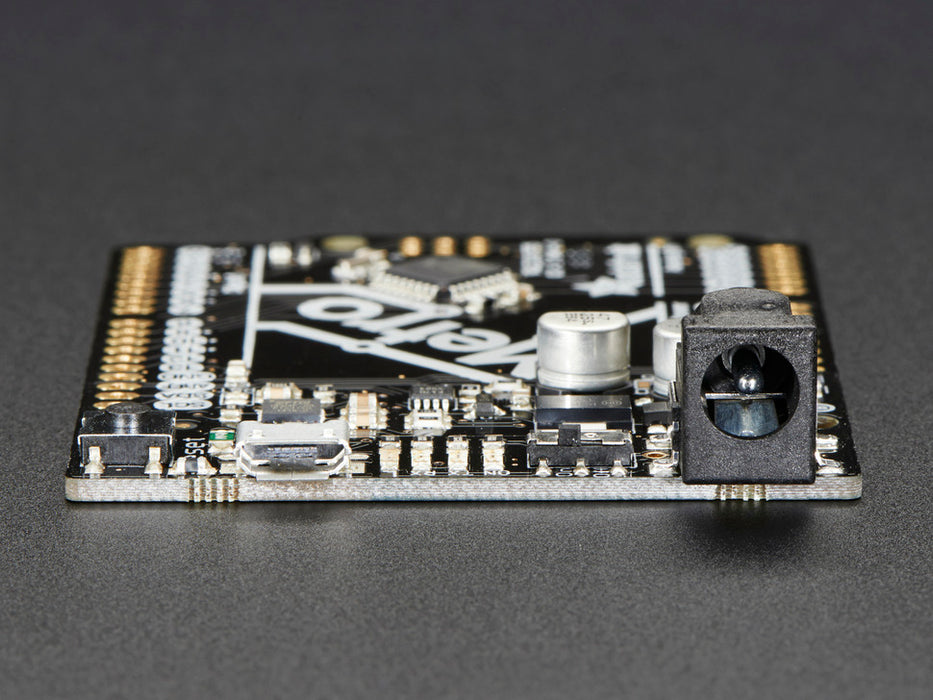
Adafruit METRO 328 without Headers - ATmega328
All prices are VAT included
We sure love the ATmega328 here at Adafruit, and we use them a lot for our own projects. The processor has plenty of GPIO, Analog inputs, hardware UART SPI and I2C, timers and PWM galore - just enough for most simple projects. When we need to go small, we use a Pro Trinket 3V or 5V, but when size isn't as much of a concern, and a USB-serial converter is required, we reach for an Adafruit METRO .
METRO is the culmination of years of playing with AVRs: we wanted to make a development board that is easy to use and is hacker friendly.
- ATmega328 brains - This popular chip has 32KB of flash (1/2 K is reserved for the bootloader), 2KB of RAM, clocked at 16MHz
- Power the METRO with 7-20V polarity protected DC or the micro USB connector to any 5V USB source. The 2.1mm DC jack has an on/off switch next to it so you can turn off your setup easily. The METRO will automatically switch between USB and DC.
- METRO has 20 GPIO pins , 6 of which are Analog in as well, and 2 of which are reserved for the USB-serial converter. There's also 6 PWMs available on 3 timers (1 x 16-bit, 2 x 8-bit). There's a hardware SPI port, hardware I2C port and hardware UART to USB.
- GPIO Logic level is 5V but by cutting and soldering closed a jumper, you can easily convert it to 3.3V logic
- USB to Serial converter , there's a hardware USB to Serial converter that can be used by any computer to listen/send data to the METRO, and can also be used to launch and update code via the bootloader
- Four indicator LEDs , on the front edge of the PCB, for easy debugging. One green power LED, two RX/TX LEDs for the UART, and a red LED connected to pin PB5
- Easy reprogramming , comes pre-loaded with the Optiboot bootloader , which is supported by avrdude and only uses 512 bytes.
- Beautiful styling by PaintYourDragon and Bruce Yan, in Adafruit Black with gold plated pads.
- Works with all Adafruit designed shields!
This version of the METRO 328 comes as a fully assembled and tested development board but without any headers attached. We do include some through-hole headers that you can solder on if you like, or you can solder wires or headers directly to the breakout pads. We also include 4 rubber bumpers to keep it from slipping off your desk.
Detailed specifications:
- ATmega328 microcontroller with Optiboot (UNO) Bootloader
- USB Programming and debugging via the well-supported genuine FTDI FT231X
- Input voltage: 7-20V
- 5V logic with 3.3V compatible inputs, can be converted to 3.3V logic operation
- 20 Digital I/O Pins: 6 are also PWM outputs and 6 are also Analog Inputs
- 6-pin ICSP Header for reprogramming
- 32KB Flash Memory - 0.5K for bootloader, 31.5KB available after bootloading
- 16MHz Clock Speed
- Compatible with "Classic" and "R3" Shields
- Adafruit Black PCB with gold plate on pads
- 53mm x 68.5mm / 2.1" x 2.7"
- Height (w/ barrel jack): 13mm / 0.5"
- Weight: 16.5g
- Derivative of "Arduino UNO R3 Reference design"
- Open source hardware files on github!

